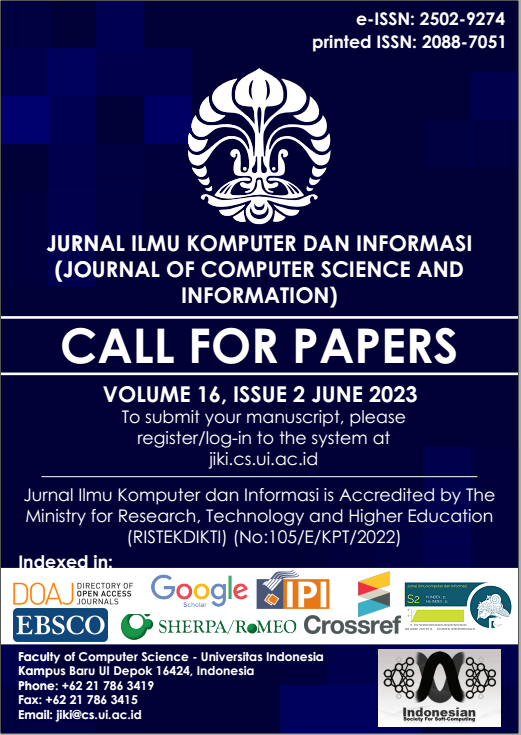Random adjustment - based Chaotic Metaheuristic algorithms for image contrast enhancement
Abstract
Metaheuristic algorithm is a powerful optimization method, in which it can solve problems
by exploring the ordinarily large solution search space of these instances, that are believed to
be hard in general. However, the performances of these algorithms signicantly depend on
the setting of their parameter, while is not easy to set them accurately as well as completely
relying on the problem's characteristic. To ne-tune the parameters automatically, many
methods have been proposed to address this challenge, including fuzzy logic, chaos, random
adjustment and others. All of these methods for many years have been developed indepen-
dently for automatic setting of metaheuristic parameters, and integration of two or more of
these methods has not yet much conducted. Thus, a method that provides advantage from
combining chaos and random adjustment is proposed. Some popular metaheuristic algo-
rithms are used to test the performance of the proposed method, i.e. simulated annealing,
particle swarm optimization, dierential evolution, and harmony search. As a case study of
this research is contrast enhancement for images of Cameraman, Lena, Boat and Rice. In
general, the simulation results show that the proposed methods are better than the original
metaheuristic, chaotic metaheuristic, and metaheuristic by random adjustment.
Authors who publish with this journal agree to the following terms:
- Authors retain copyright and grant the journal right of first publication with the work simultaneously licensed under a Creative Commons Attribution License that allows others to share the work with an acknowledgement of the work's authorship and initial publication in this journal.
- Authors are able to enter into separate, additional contractual arrangements for the non-exclusive distribution of the journal's published version of the work (e.g., post it to an institutional repository or publish it in a book), with an acknowledgement of its initial publication in this journal.
- Authors are permitted and encouraged to post their work online (e.g., in institutional repositories or on their website) prior to and during the submission process, as it can lead to productive exchanges, as well as earlier and greater citation of published work (See The Effect of Open Access).













